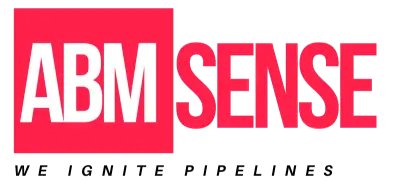How Can You Use Employee Advocacy for B2B Demand Generation?
How might you utilize employee advocacy for B2B demand generation? This potent strategy enables employees to don the hat of brand ambassador, in turn supercharging your demand generation work. It is also a strategy that works from different angles. First, and most obviously, it is a way to increase brand visibility. But trust and credibility also come into play, and those are the stock in trade of the B2B world.
The Importance of Employee Advocacy in B2B
Making your employees your advocates turns them into a potent force for marketing. It is said that trust makes the world go round, and it is especially true in business. Around 84% of consumers trust the recommendations of people they know, while only around 15% trust the ads that companies pay to have placed. When your employees share company content, they make that content reach many more people. In this way, they become advocates for the organization.
Additionally, employee advocacy establishes a more genuine relationship with possible customers. For instance, 70% of buyers favor finding out about a company through articles rather than ads. Thus, by using the voices of employees, companies can communicate this much more effectively. And as a bonus, using employees to communicate makes a company sound less like a robot and more like a human.
- Enhanced Impressions: Staff members are, on average, 10 times better connected than a company’s official social media major.
- Increased Engagement: When employees share content, it gets 8 times more engagement than when brands share content.
- Increasing Credibility: Trust emerges from personal relationships, and trust is the currency of decision-making.
Organizations can develop strategic employee advocacy programs that contribute to substantial demand generation by harnessing these insights.
How Can You Use Employee Advocacy for B2B Demand Generation?
A sound employee advocacy plan can multiply your B2B demand generation. Here are some take-to-the-bank steps.
- Employees should be educated: Offer training about your brand, your products, and the fine points of effective social media sharing.
- Make Content That Can Be Shared: Produce content that is of such high value and engagingness that your employees will engage with it—and then, we hope, share it with their networks.
- Encourage Engagement: Provide incentives or validation for employees who take part in proxy types of advocacy.
- Make Use of Tools: This is about using social media tools that let employees share content easily.
Salesforce has an employee advocacy program that is successful. This program tells the employees at Salesforce to share content that has been curated. When they share this content, it gets seen. In total, the employees at Salesforce generate a little over 8 million impressions in a month. The content being seen has led to an increase in some of the most valuable content for the marketing department: leads.
Measuring the Impact of Employee Advocacy
It is imperative to ascertain how effective your employee advocacy initiatives are. For this purpose, keep tabs on these metrics:
- Engagement Rates: Assess the number of likes, shares, and comments on content that employees share.
- Lead Generation: Keep track of the number of leads that posts shared by employees yield.
- Brand Awareness: Evaluate shifts in brand perception and recognition that occur before and after the execution of advocacy strategies.
As per the Social Media Examiner, firms that gauge engagement experience a 25% uptick in thriving social media initiatives. This figure underscores the necessity of measuring the advocacy expressed by your employees.
Best Practices for Implementing an Employee Advocacy Program
Successfully implementing a B2B demand generation strategy via employee advocacy requires attention to these best practices:
- Begin small: Initiate with a trial program that includes a handful of eager employees.
- Cultivate a Community: Make an atmosphere that inspires workers to be involved and gives them a sense of inclusion.
- Ongoing evaluation is critical to the success of your program. Solicit feedback from participants to continuously enhance your advocacy program.
- Success Stories Should Be Highlighted: Achievements and successes within the company should be shared to motivate and inspire more employees to join and be part of this movement.
Best practices have successfully been employed by companies such as IBM and Dell to give their demand generation a substantial shot in the arm.
These best practices have led to these companies generating more raw leads that convert to sales.
In Conclusion
Advocacy by your employees is more than just a buzzword. It’s a valid and solid strategy in our world of B2B demand generation. But how, exactly, does one leverage employee advocacy for B2B demand generation?
Well, it starts with your employees, whom you want to make into brand ambassadors for your company. You want them to engage with your target audience in such a way that a relationship gets formed and that relationship gets fostered all the way to the point where the audience becomes a client.
Advocacy by your employees will reach more people, claim a larger sphere of influence, and be more credible than anything you could do or say as a company to generate demand. It might just be the most valuable demand-generation strategy you have.
Explore More on us
Discover insightful blogs on our Blogging Space, check our WordPress Visitor Identification Plugin, and learn more about Account-Based Marketing.


